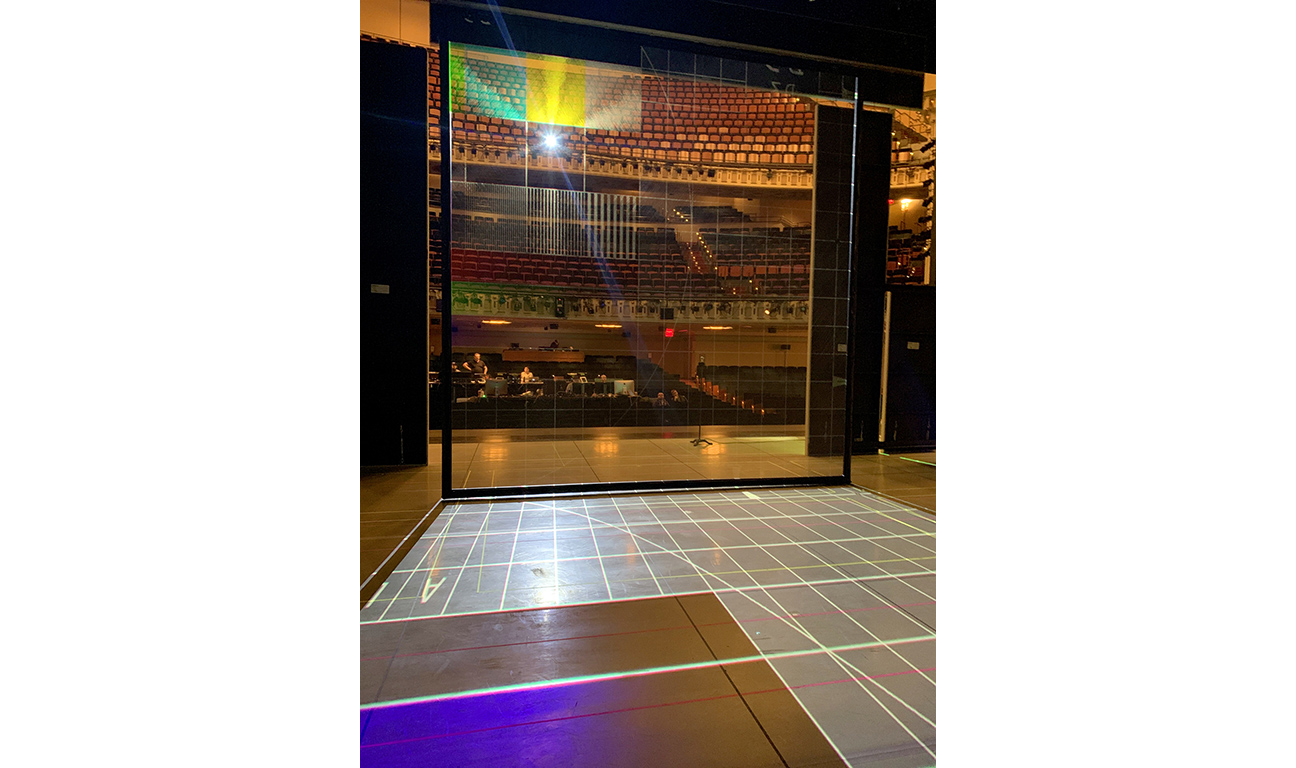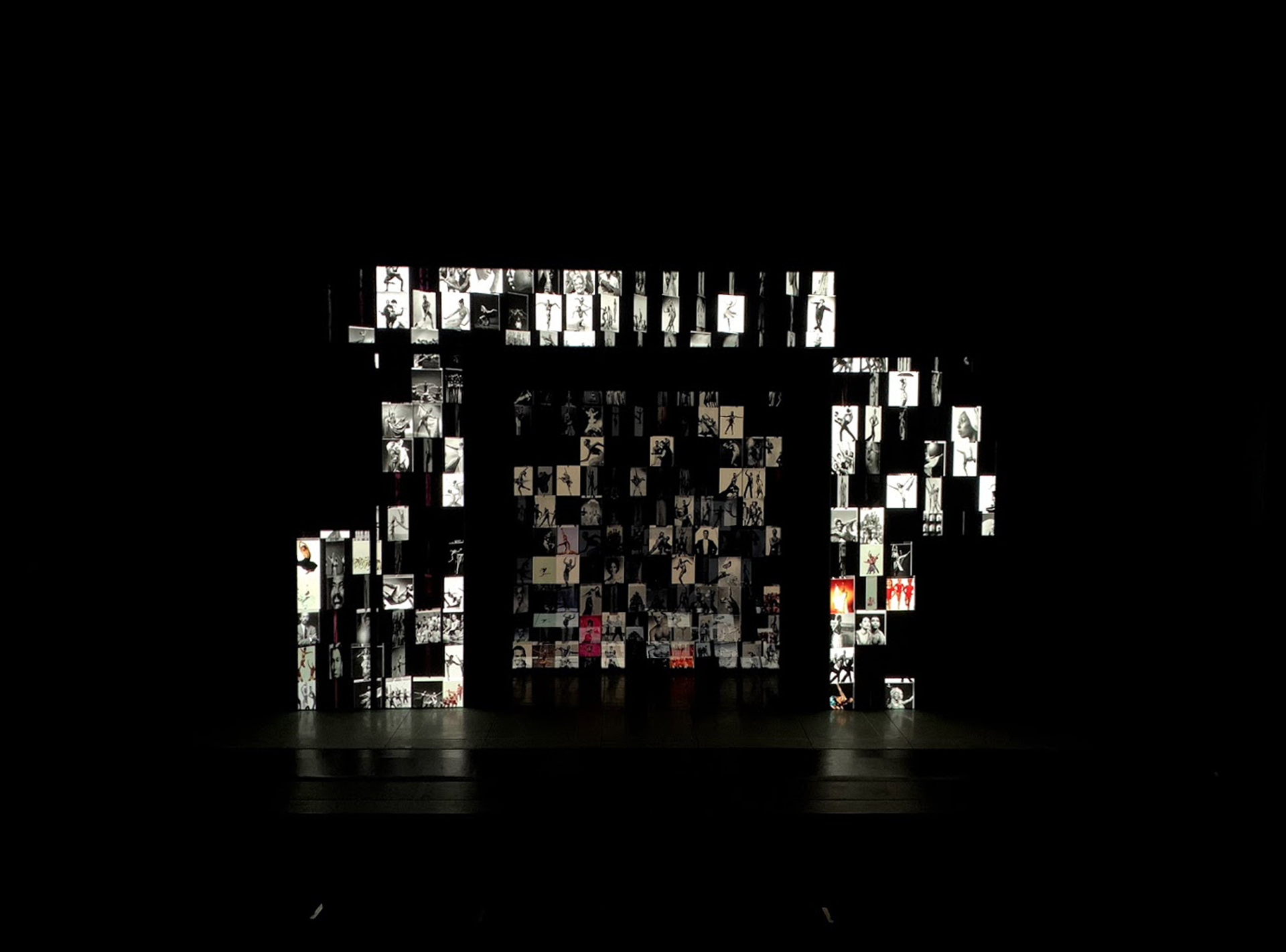Distilling the essence of Alvin Ailey for the 60th Anniversary of Alvin Ailey American Dance Theater (AAADT) was a challenging task for Bob Bonniol, Caryl Glaab, and Pablo N. Molina of MODE Studios, who created a video tribute that includes rarely seen photos, videos, and audio interviews with the late Alvin Ailey. The result is “Becoming Ailey,” a five-minute multimedia piece that ran at the opening of each performance during the company’s fall 2018 New York City season. Read Part One!
For the choice of images, archival research, software, and rendering to create the collage of images used in “Becoming Ailey,” Glaab explains, “We had the privilege to spend several days with key members of the Ailey company in their media archives, reviewing the extraordinary history and work of the company. The principal ‘hero’ of which was Sylvia Waters. Sylvia had been the artistic director of Ailey II for more than 20 years, after being one of the original company members. She was such a gift, and she was able to lead us to some extraordinary moments. We were able to utilize a great deal of this archived media in the piece.”

For Glaab, the challenge was to make the older footage, some recorded in the very early days of Mr. Ailey’s career, blend with the most recently recorded media. “Mapping the archival images across the layered surfaces, breaking images so that part would appear on an upstage surface, and the rest on the downstage, we were able to create an effect that showcased the beauty of the dancing and choreography without making the archival nature of the recordings an issue,” says the video guru. “Layering in color fields and other textural elements and the theatrical lighting further enhanced the experience of seeing this material presented in a new form that removed any focus on its inherent recorded quality.”
Since they were working with the audio sample soundscape of Mr. Ailey’s quotes and the musical composition created by Fred Carl, the MODE team was able to combine footage and images of the company's work without trying to represent it as a documentation of the original dance performance. “We carefully chose footage and images that illustrated Mr. Ailey’s words and the journey and development of the company in a visceral and emotional way, while always making sure to treat each placement with the utmost respect for its original intention,” notes Glaab. “We never approached the material as ‘clip art’ that could just be chopped together, rather we carefully allowed one beautiful movement or image to move to another to illustrate the words and intention of Mr. Ailey’s statements.”
As Glaab also points out, “At the end of the piece, the mosaic of faces of all the current and past members of the company, moving to form a portrait of Mr. Ailey, was truly the ‘goose-bump moment’ for the audience. We found an audio quote from Mr. Ailey saying, ‘The highpoint has been watching young people and choreographers come out of this organization. This is not about Alvin Ailey. It's about people going on, it's about making a place so that this idea that I got entrenched in and entwined in 1949 could go on…It’s about the future.’ The quote truly resonated with us and perfectly expressed what the piece was about. The mosaic of faces resolving into Mr. Ailey’s smiling portrait was the most perfect and poignant visual representation of that statement and created the perfect punctuation to the end of the piece.”

The material for the show was created in Adobe After Effects, Maxon Cinema 4D, and Photoshop. All media playback and projection mapping was accomplished using disguise video servers. “This choice was driven by the requirement for an extremely efficient workflow, on-site flexibility for mapping the content, and the strong pre-viz capabilities of the disguise software,” says Glaab, who collaborated with designer Pablo N. Molina and programmer Ben Keightley.
“Since moving the screens into different configurations on stage during the piece, and thus tracking the projected images to them was beyond the scope of the project, one of the primary design challenges was to create the feeling of this movement and theatricality by mapping and moving the images to create motion and depth,” explains Molina. “As is the case with many projects, the limitation became the inspiration and helped to bring all of the material to life. Combined with the audio landscape, it created a gestalt that had the theatrical and emotional tone MODE and AAADT wanted to achieve in the piece.”
Lighting director of the Alvin Ailey American Dance Theatre since 1998, Al Crawford designed the lighting for “Becoming Ailey,” and points out, “When I first was approached about this piece in the early stages, I knew there was only one person who could capture Alvin’s spirit. Bob and the Mode Studios team were the perfect storytellers. They plummeted down the rabbit hole in a literal treasure chest of still imagery, footage, and audio with vastly dynamic levels of quality and came out on the other side with a very human snapshot of the man.”
For Crawford, the lighting of “Becoming Ailey” is in the spirit of blending the lines between what is projected and what is light. “Crafted architecture in light is layered amongst the projected surfaces, commenting on color, texture, and time,” he says. “Some of the multidimensional holographic effects were found to be most effective with a layer of light either around or behind them. In the end, a holistic image is achieved. The lighting is primarily achieved through the company’s repertory moving light package of three Martin by Harman Viper Profiles and eight Martin Viper Performances as well as eight ETC Multipar Striplights and ETC EOS Ti lighting control.”